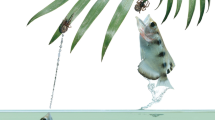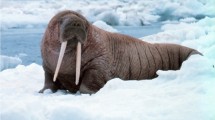Abstract
The solution to numerous real-world problems is challenging using the in-hand deterministic approaches in the modern age. The researchers are continuously looking for new methods to deal with such tasks. The timE−bound dependency on the solutions motivates the researchers to develop approximate approaches. If the answer is not with us, nature may provide a direction for approximate solutions for various problems. A few applications have been significantly solved by algorithms inspired by the different species’ natural behavior. These naturE−inspired algorithms are developed based on the survival strategies of the species. This study attempts to simulate the shelter searching strategy of the tropical cancer hermit crabs mathematically. The presented algorithm is called hermit crab shell exchange (HCSE). The competitiveness of the HCSE algorithm is established on three different sets of optimization functions, including various unconstrained, constrained, and engineering design optimization problems.







Similar content being viewed by others
References
Akyol S, Alatas B (2017) Plant intelligence based metaheuristic optimization algorithms. Artif Intell Rev 47(4):417–462
Molina D, Poyatos J, Del Ser J, García S, Hussain A, Herrera F (2020) Comprehensive taxonomies of naturE−and bio-inspired optimization: inspiration versus algorithmic behavior, critical analysis recommendations. Cognitive Comput 12(5):897–939
Ho YC, Pepyne DL (2002) Simple explanation of the no-freE−lunch theorem and its implications. J Opt Theory Appl 115(3):549–570
Lancaster I (1988) Optimisation in the life history of the hermit crab pagurus bernhardus (l.)
Arce E, Alcaraz G (2012) Shell preference in a hermit crab: comparison between a matrix of paired comparisons and a multiplE−alternative experiment. Mar Biol 159(4):853–862
Chase ID, Weissburg M, Dewitt TH (1988) The vacancy chain process: a new mechanism of resource distribution in animals with application to hermit crabs. Anim Behav 36(5):1265–1274
Hazlett BA (1987) Information transfer during shell exchange in the hermit crab Clibanarius antillensis. Anim behav 35(1):218–226
BBC Earth. Crab shell exchange
Kennedy J, Eberhart R (1995) Particle swarm optimization. In: Proceedings of ICNN’95-international conference on neural networks. IEEE, vol 4, pp 1942–1948
Dorigo M, Maniezzo V, Colorni A (1996) Ant system: optimization by a colony of cooperating agents. IEEE Transact Syst Man Cybern Part B (Cybernetics) 26(1):29–41
Karaboga D et al (2005) An idea based on honey bee swarm for numerical optimization. Technical report, Technical report-tr06, Erciyes university, engineering faculty, computer
Eusuff M, Lansey K, Pasha F (2006) Shuffled frog-leaping algorithm: a memetic meta-heuristic for discrete optimization. Eng opt 38(2):129–154
Yang XS (2009) Firefly algorithms for multimodal optimization. In: international symposium on stochastic algorithms. Springer, pp 169–178
Yang XS (2010) A new metaheuristic bat-inspired algorithm. In: nature inspired cooperative strategies for optimization (NICSO 2010). Springer, pp 65–74
Yang XS, Deb S (2010) Engineering optimisation by cuckoo search. Int J Math Modell Numer Optim 1(4):330–343
Mirjalili S, Mirjalili SM, Lewis A (2014) Grey wolf optimizer. Adv Eng Softw 69:46–61
Bansal JC, Sharma H, Jadon SS, Clerc M (2014) Spider monkey optimization algorithm for numerical optimization. Memet comput 6(1):31–47
Mirjalili S (2015) The ant lion optimizer. Adv Eng Softw 83:80–98
Mirjalili S, Lewis A (2016) The whale optimization algorithm. Adv Eng Softw 95:51–67
Askarzadeh A (2016) A novel metaheuristic method for solving constrained engineering optimization problems: crow search algorithm. Comput Struct 169:1–12
Mirjalili S (2016) Dragonfly algorithm: a new meta-heuristic optimization technique for solving singlE−objective, discrete, and multi-objective problems. Neural Comput Appl 27(4):1053–1073
Mirjalili S, Gandomi AH, Mirjalili SZ, Saremi S, Faris H, Mirjalili SM (2017) Salp swarm algorithm: a bio-inspired optimizer for engineering design problems. Adv Eng Softw 114:163–191
Heidari AA, Mirjalili S, Faris H, Aljarah I, Mafarja M, Chen H (2019) Harris hawks optimization: algorithm and applications. Future Gener Comput Syst 97:849–872
Abualigah L, Yousri D, Elaziz Abd M, Ewees AA, Al-Qaness MAA, Gandomi AH (2021) Aquila optimizer: a novel meta-heuristic optimization algorithm. Comput Ind Eng 157:107250
Agushaka JO, Ezugwu AE, Abualigah L (2022) Dwarf mongoose optimization algorithm. Compu Methods Appl Mech Eng 391:114570
Oyelade ON, Ezugwu AES, Mohamed TIA, Abualigah L (2022) Ebola optimization search algorithm: a new naturE−inspired metaheuristic optimization algorithm. IEEE Access 10:16150–16177
Abualigah L, Elaziz Abd M, Sumari P, Geem WZ, Gandomi AH (2022) Reptile search algorithm (rsa): a naturE−inspired meta-heuristic optimizer. Expert Syst Appl 191:116158
Arindam M (2022) Termite alate optimization algorithm: a swarm-based nature inspired algorithm for optimization problems. Evoluti Intell. 1–21
Holland JH (1992) Genetic algorithms. Sci Am 267(1):66–73
Storn R, Price K (1997) Differential evolution-a simple and efficient heuristic for global optimization over continuous spaces. J Glob Opt 11(4):341–359
Beyer HG, Schwefel HP (2002) Evolution strategies-a comprehensive introduction. Nat comput 1(1):3–52
Simon D (2008) Biogeography-based optimization. IEEE Transact Evolut Comput 12(6):702–713
Geem ZW, Kim JH, Loganathan GV (2001) A new heuristic optimization algorithm: harmony search. Simulation 76(2):60–68
Rashedi E, Nezamabadi-Pour H, Saryazdi S (2009) Gsa: a gravitational search algorithm. Inf Sci 179(13):2232–2248
Hatamlou A (2013) Black hole: a new heuristic optimization approach for data clustering. Inf sci 222:175–184
Alatas B, Bingol H (2019) A physics based novel approach for travelling tournament problem: optics inspired optimization. Inf Technol Control 48(3):373–388
Venkata RR, Savsani VJ, Vakharia DP (2011) Teaching-learning-based optimization: a novel method for constrained mechanical design optimization problems. Computer-Aided Des 43(3):303–315
Ayyarao TSLV, RamaKrishna NSS, Elavarasan RM, Nishanth PM, Rambabu GS, Khan B, Alatas B (2022) War strategy optimization algorithm: a new effective metaheuristic algorithm for global optimization. IEEE Access 10:25073–25105
Yang XS (2012) Flower pollination algorithm for global optimization. In: international conference on unconventional computing and natural computation. Springer, pp 240–249
Ghaemi M, Feizi-Derakhshi MR (2014) Forest optimization algorithm. Expert Syst Appl 41(15):6676–6687
Abualigah L, Diabat A, Mirjalili S, Elaziz Abd M, Gandomi AH (2021) The arithmetic optimization algorithm. Comput Methods Appl Mech Eng 376:113609
Van Laarhoven PJM, Aarts EHL (1987) Simulated annealing. Simulated annealing: theory and applications, Springer, pp 7–15
Betka A, Toumi A, Terki A, Hamiane M (2022) An efficient metaheuristic method based on the bittorrent communication protocol (EM-BT). Evolut Intell, 1–20
Tropical hermit crab with a shell. https://innerstrength.zone/animals/hermit-crabs-linE−up-to-swap-shells-with-other-crabs/. Accessed 11 Nov 2021
Hermit crabs standing in a descending order to perform shell exchange chain sequence: https://innerstrength.zone/animals/hermit-crabs-linE−up-to-swap-shells-with-other-crabs/. Accessed 12 Nov 2021
Suganthan PN, Hansen N, Liang JJ, Deb K, Chen YP, Auger A, Tiwari S (2005) Problem definitions and evaluation criteria for the cec, special session on real-parameter optimization. KanGAL report 2005005:2005
Ali MM, Khompatraporn C, Zabinsky ZB (2005) A numerical evaluation of several stochastic algorithms on selected continuous global optimization test problems. J Glob Optim 31(4):635–672
Clerc M, Kennedy J (2011) Standard pso 2011. Particle swarm central site. http://www. particleswarm. info
Mokan M, Sharma K, Sharma H, Verma C (2014) Gbest guided differential evolution. In: Industrial and information systems (ICIIS), 2014 9th international conference on, pp 1–6. IEEE
Bozorg-Haddad O, Solgi M, Loáiciga HA. Shuffled frog-leaping algorithm. Meta-Heuristic and Evolutionary Algorithms for Engineering Optimization, 133–143
Venkata RR, Savsani VJ, Vakharia DP (2012) Teaching-learning-based optimization: an optimization method for continuous non-linear large scale problems. Inf Sci 183(1):1–15
Kennedy J (2011) Particle swarm optimization. In: Encyclopedia of machine learning. Springer, pp 760–766
Sharma A, Sharma H, Bhargava A, Sharma N, Bansal JC (2016) Optimal placement and sizing of capacitor using limaçon inspired spider monkey optimization algorithm. Memet Comput 9:1–21
Sharma A, Sharma H, Bhargava A, Sharma N (2016) Optimal power flow analysis using lévy flight spider monkey optimisation algorithm. Int J Artif Intell Soft Comput 5(4):320–352
Liang JJ, Runarsson TP, Mezura-Montes E, Clerc M, Suganthan PN, Coello CCA, Deb K (2006) Problem definitions and evaluation criteria for the cec 2006 special session on constrained real-parameter optimization. J Appl Mech 41(8):8–31
Zhu G, Kwong S (2010) Gbest-guided artificial bee colony algorithm for numerical function optimization. App Math Comput 217(7):3166–3173
Sharma H, Bansal JC, Arya KV, Yang XS (2016) Lévy flight artificial bee colony algorithm. Int J Syst Sci 47(11):2652–2670
Rawal P, Sharma H, Sharma N (2017) A local exploitation based gravitational search algorithm. In: 2017 international conference on computer, communications and electronics (comptelix). IEEE, pp 573–579
Sharma P, Sharma N, Sharma H (2017) Locally informed shuffled frog leaping algorithm. In: proceedings of sixth international conference on soft computing for problem solving, Springer, pp 141–152
Sharma A, Sharma H, Bhargava A, Sharma N (2017) Fibonacci series-based local search in spider monkey optimisation for transmission expansion planning. Int J Swarm Intell 3(2–3):215–237
Priya S, Harish S, Nirmala S (2016) Fast convergent biogeography based optimization algorithm. In: 2016 international conference on advances in computing, communications and informatics (ICACCI), IEEE, pp 782–787
Ros R, Hansen N (2008) A simple modification in cma-es achieving linear time and space complexity. In: international conference on parallel problem solving from nature. Springer, pp 296–305
Sharma K, Chhamunya V, Gupta PC, Sharma H, Bansal JC (2015) Fitness based particle swarm optimization. Int J Syst Assur Eng Manag 6(3):319–329
Wang Y, Li JP, Xue X, Wang BC (2019) Utilizing the correlation between constraints and objective function for constrained evolutionary optimization. IEEE Transact Evolut Comput 24:29–43
Wang Y, Wang BC, Li HX, Yen GG (2015) Incorporating objective function information into the feasibility rule for constrained evolutionary optimization. IEEE Transact Cybern 46(12):2938–2952
Bansal JC, Joshi SK, Sharma H (2018) Modified global best artificial bee colony for constrained optimization problems. Comput Electr Eng 67:365–382
Banharnsakun A, Achalakul T, Sirinaovakul B (2011) The best-so-far selection in artificial bee colony algorithm. Appl Soft Comput 11(2):2888–2901
Sharma N, Sharma H, Sharma A, Bansal JC (2018) Grasshopper inspired artificial bee colony algorithm for numerical optimisation. J Exp Theor Artif Intell 33:1–19
Karaboga D, Akay B (2011) A modified artificial bee colony (abc) algorithm for constrained optimization problems. Appl Soft Comput 11(3):3021–3031
Author information
Authors and Affiliations
Corresponding author
Additional information
Publisher's Note
Springer Nature remains neutral with regard to jurisdictional claims in published maps and institutional affiliations.
Rights and permissions
Springer Nature or its licensor holds exclusive rights to this article under a publishing agreement with the author(s) or other rightsholder(s); author self-archiving of the accepted manuscript version of this article is solely governed by the terms of such publishing agreement and applicable law.
About this article
Cite this article
Sharma, A., Sharma, N. & Sharma, H. Hermit crab shell exchange algorithm: a new metaheuristic. Evol. Intel. 17, 771–797 (2024). https://doi.org/10.1007/s12065-022-00753-8
Received:
Revised:
Accepted:
Published:
Issue Date:
DOI: https://doi.org/10.1007/s12065-022-00753-8




